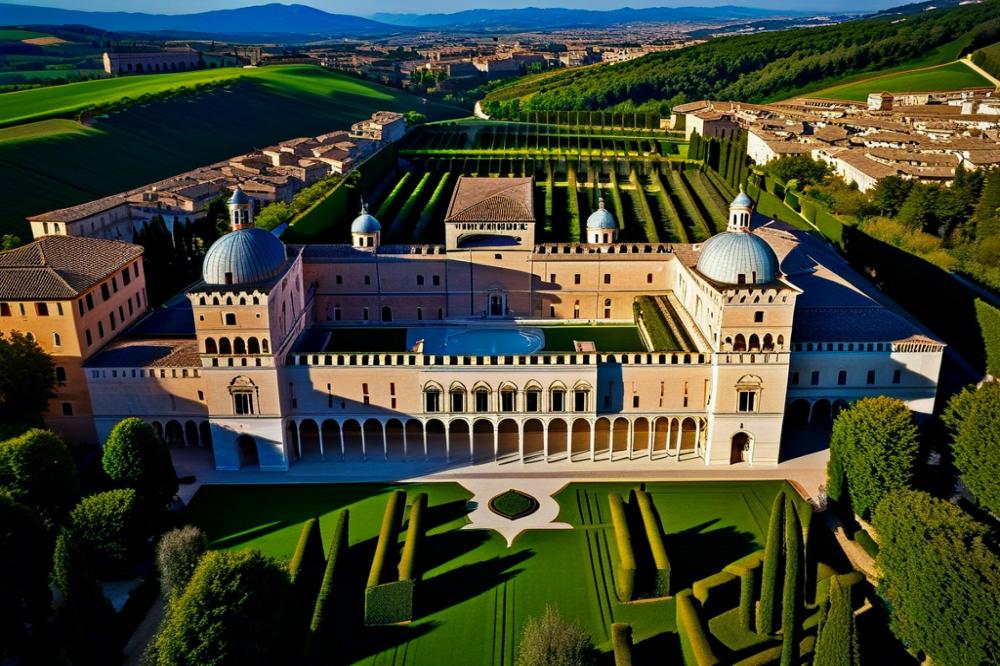The Lavish Gardens of Palazzo Ducale in Urbino
Palazzo Ducale in Urbino stands as a remarkable symbol of the Renaissance era. This grand building is not just an architectural marvel; it is a testament to the artistic and cultural achievements of Italy during this transformative period. Recognized as a UNESCO World Heritage site, it showcases the brilliance of Renaissance art and architecture, attracting visitors from around the globe.
The palace has strong ties to Duke Federico da Montefeltro, a key figure in the history of Urbino. Known for his keen appreciation of art and learning, the Duke transformed the palace into a center of culture. His vision brought together leading artists and thinkers, which helped establish the region as a hub for innovation and creativity.
In addition to its striking architecture, the landscape surrounding the palace plays a significant role. The Urbino Gardens are famous for their intricate horticulture and stunning botanical design. These gardens reflect the harmony between nature and art, embodying the ideals of the Renaissance. Visitors can stroll through these beautiful spaces, experiencing a slice of Italy’s rich cultural heritage. The lavishness of the gardens enhances the overall experience of exploring this historical site.
The Historical Context of Palazzo Ducale
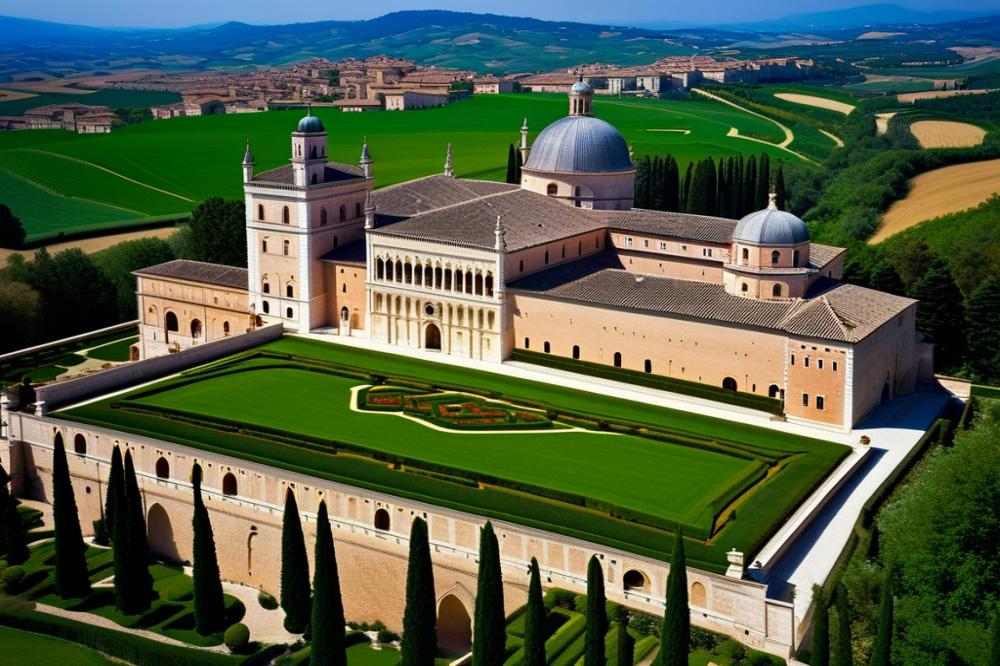
The story of the Palazzo Ducale in Urbino begins in the 15th century during the Renaissance. At this time, Duke Federico da Montefeltro took on a significant role in shaping both the architecture and landscape of the site. His vision transformed it into a symbol of cultural power and artistic achievement. This period marked a blooming of art, architecture, and horticulture.
Under Federico’s guidance, the palace became a masterpiece of Renaissance design. He invited many of the best artists and architects of his day, turning Urbino into a cultural hub. The innovative botanical design within the gardens reflected the ideals of the time. Each corner revealed an attention to detail that honored nature’s beauty. Gardens were not mere decorations; they were integral to the cultural heritage of the area.
The influence of Duke Federico extended well beyond Urbino. His dedication to the arts fostered a creative environment that would inspire generations. The gardens, with their carefully planned layouts and diverse plant species, showcased this commitment. Today, they are recognized as a vital aspect of Italy’s rich history, contributing to its designation as a UNESCO World Heritage site.
Exploration of these lavish gardens offers insights into the past. They provide a window into the world of the Renaissance and the values held by its leaders. Visitors can appreciate the connection between humanity and nature that resonates in Italian gardens. The interplay of art and architecture in these landscapes leaves an enduring impact, reflecting the ideals of the era and the ambition of its rulers.
The Signature Features of the Gardens
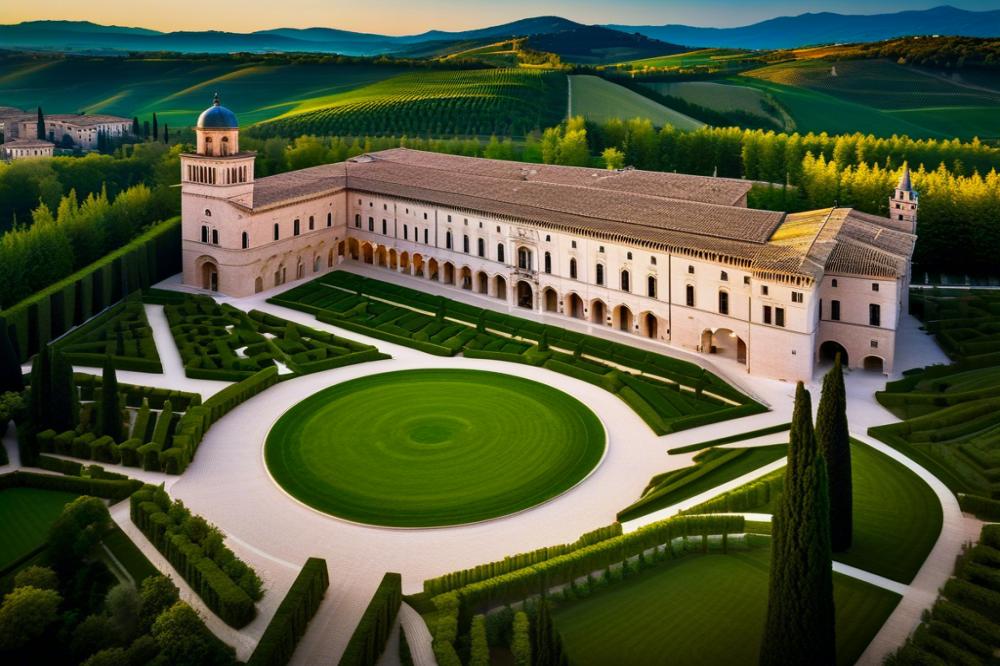
The gardens surrounding Palazzo Ducale are a breathtaking showcase of Renaissance horticulture. Duke Federico da Montefeltro, a patron of the arts, oversaw their creation. These gardens reflect a meticulous blend of design and nature, which is a hallmark of Italian gardens from that era.
Careful planning shaped every aspect of the landscape. Different sections serve various purposes, from formal areas meant for leisure to more whimsical spots for contemplation. Pathways meander through lush greenery, inviting visitors to explore the artistry of the layout. Alignments and perspectives were skillfully crafted to enhance the view of the grand architecture.
Water features play a significant role in this garden’s allure. Fountains and small ponds not only provide aesthetic charm but also contribute to the overall harmony of the space. Gentle sounds of flowing water create a serene atmosphere that complements the visual splendor. Elements of water in garden design symbolize life and renewal, tying into the Renaissance ethos.
Sculptures add another layer of depth to the botanical design. Many pieces feature classical themes, echoing the texts and philosophy of the time. Statues and ornamental structures serve as focal points, drawing the eye and inviting admiration. They remind visitors of the cultural heritage that these gardens represent.
Renaissance principles of order and symmetry are evident throughout. Plants are arranged to create balance, with seasonal flowers adding bursts of color. This carefully curated flora reflects a deep understanding of horticulture, emphasizing both beauty and functionality. Thoughtful selections ensure that the gardens are visually stunning all year round.
The ongoing preservation of these gardens is crucial. As a UNESCO World Heritage site, they not only highlight the era’s artistic advancements. This space serves a larger purpose, reminding us of the connections between art, architecture, and nature.
The lavish gardens around the Palazzo Ducale stand as a testament to a bygone era, yet they continue to inspire and captivate anyone who steps within their bounds. Every element, from the carefully chosen plants to the striking sculptures, showcases the genius of Renaissance garden design.
Art and Architecture in the Gardens
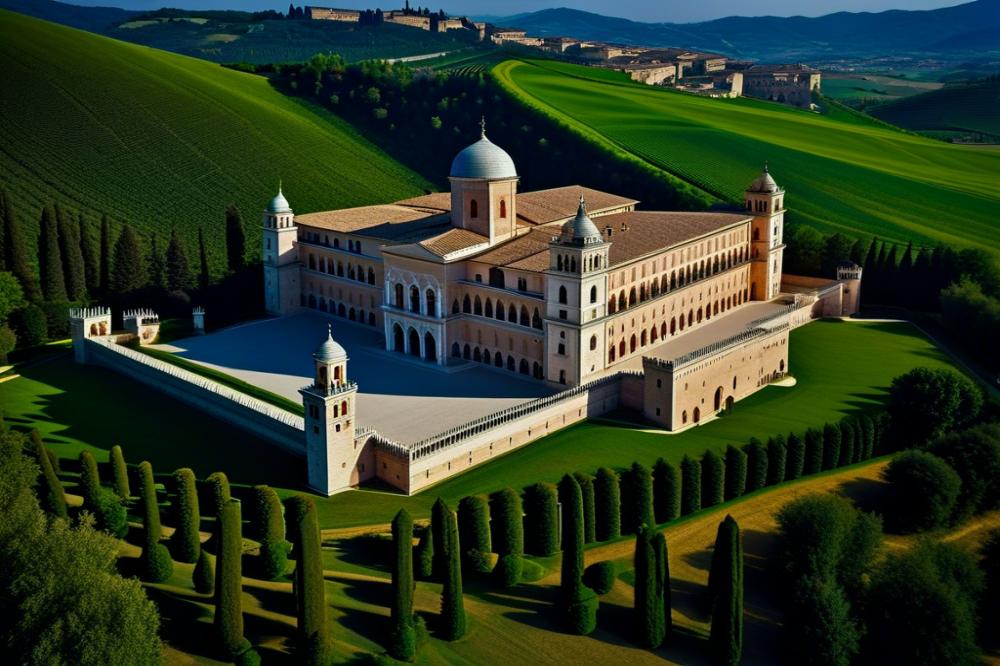
The Lavish Gardens of Palazzo Ducale reflect the grandeur of the Renaissance period. Here, art and architecture come together in a striking display. Visitors can admire how the gardens incorporate elements of Italian gardens. The careful layout showcases a blend of horticulture and art, creating a stunning landscape.
Designed during the 15th century, the gardens were commissioned by Duke Federico da Montefeltro. He aimed to build a serene oasis that highlighted the beauty of nature. The integration of botanical design was vital for this vision. Various plants and flowers not only offered aesthetic pleasure but also demonstrated knowledge of horticulture in the Renaissance.
Careful attention to symmetry and perspective is evident throughout the area. Paths wind through lush greenery, leading to inviting spaces. Those who stroll through will notice the connection between the gardens and the architecture of the palace. Columns and arches frame the views, enhancing the overall experience.
Notable architects played a role in developing this elaborate project. Their designs were influenced by the artistic ideals of the time. UNESCO World Heritage status underscores the gardens’ cultural heritage, reflecting the significance of Renaissance influences in Italy. Such recognition highlights the gardens not just as a botanical space but also as a vital part of our artistic legacy.
Artistic elements abound in every corner. Sculptures and fountains add a touch of elegance, enhancing the natural beauty of the gardens. These features echo the intricate artistry found within the palace itself. Each artwork serves as a reminder of the deep appreciation for beauty in the Renaissance era.
Connecting the architectural style of the palace with the gardens enriches the visitor’s artistic journey. The interplay between these elements results in a harmonious blend of nature and art. Overall, the gardens stand as a testament to the vision of their creator and the artistic movements of their time.
The Role of the Gardens in Italian Cultural Heritage
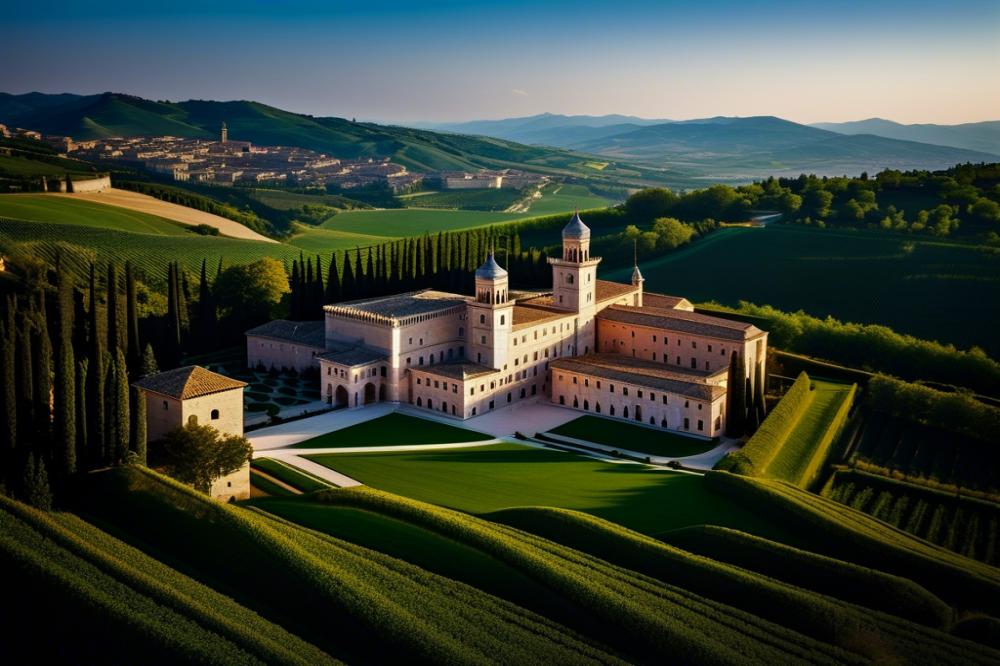
The gardens surrounding the Renaissance palace in Urbino showcase the ideals of Italian gardens beautifully. Designed during the height of the Renaissance, they reflect a deep appreciation for nature, art, and architectural harmony. Symbolism plays a significant role here. Each layout, plant selection, and ornamental feature is carefully chosen to represent wealth, power, and intellectual pursuits. Colorful flowers and lush greenery were not just for pleasing the eye; they also signified the prosperity of Duke Federico da Montefeltro and his court.
This Duke was a patron of art, and his gardens served as an extension of his cultural ambitions. Horticulture was more than a pastime; it became a means of expressing artistic ideals. The careful arrangement of plants mirrored the structured beauty of architectural design. Beyond aesthetic pleasure, these outdoor spaces were multifunctional. They acted as venues for social gatherings, political discussions, and cultural events. The influence of the gardens reached beyond the aristocracy, impacting everyday cultural practices of the time.
The design elements found in Italian gardens showcase a balance between nature and human intervention. The terraced landscapes and water features were meticulously planned to create a serene atmosphere. Visitors experienced a retreat from urban life, immersed in a space that celebrated both beauty and intellect. Gardens in this era were also pedagogical spaces, promoting knowledge about botanical design and horticultural practices. They were repositories of knowledge for future generations.
As part of the UNESCO World Heritage site, these gardens carry immense cultural heritage. They tell stories of political power, artistic inspiration, and social interactions. Each season among these plants offers a glimpse into the past, where gatherings of nobility took place among the greenery. The gardens were alive with laughter, discussions, and the fragrances of blooming flowers. Thus, they hold more than just historical significance; they represent a living connection to Italy’s rich cultural roots.
Contemporary Significance and Preservation Efforts
The gardens of Palazzo Ducale in Urbino reflect a rich tapestry of Italian horticulture and design. Today, they stand not only as a testament to the Renaissance creativity of Duke Federico da Montefeltro but also as integral elements of our cultural heritage. These historical landscapes, recognized by UNESCO World Heritage, draw visitors from around the world. The essence of the gardens lies in their art and architecture, creating a unique experience for all who visit.
Preservation of these gardens is a significant challenge. Weathering over time, the area has faced several restoration needs. Various organizations collaborate to maintain the beauty and integrity of the botanical design. Ongoing projects aim to restore the original plant species that flourished in the Renaissance. This focus on authenticity helps to educate the public about horticultural practices of the past.
Modern tourism thrives on attractions that carry a story and a legacy. Visitors arrive with the hope of experiencing history firsthand. By retaining the gardens’ historical features, they contribute to an immersive journey into the past. Efforts in restoration and maintenance enhance this experience, allowing people to appreciate the beauty and significance of the landscape. Each plant represents a connection to a bygone era, encouraging deeper exploration and understanding of the context.
Educational initiatives also play a vital role. Workshops and guided tours offer insights into the gardens’ horticulture. They teach the public about plant care and the aesthetics rooted in Renaissance philosophy. Such programs foster a greater appreciation for botanical artistry and environmental stewardship. Knowledge about these gardens enriches visitors’ experiences and enhances their learning.
In recent years, community involvement has increased. Local volunteers often join in conservation efforts, helping to promote awareness. Engaged citizens demonstrate the passion for preserving this historical site for future generations. By preserving the gardens, stakeholders highlight the significance of cultural heritage and sustainability in an ever-changing world.
Final Thoughts
The gardens surrounding the Palazzo Ducale are more than just a beautiful landscape; they are a vibrant reflection of Italian heritage. Designed during the Renaissance, these green spaces capture the essence of the era, highlighting the values of beauty, balance, and nature. They served as a retreat for Duke Federico da Montefeltro and his court, showcasing the importance of leisure and reflection in a time of great cultural achievement.
One of the defining features of these gardens is their intricate design. The carefully arranged pathways, manicured hedges, and elegant fountains speak to a sophisticated understanding of nature and aesthetic harmony. Each element seems placed with purpose, inviting visitors to pause and appreciate the artistry of the surroundings. This thoughtful layout is a testament to the enduring legacy of their creator.
Visiting the gardens offers more than just a visual treat. It provides a connection to the past, reminding us of a time when beauty was paramount. Here, history comes alive, inviting those who wander among the plants to reflect on the lives of those who once strolled these paths. In doing so, we understand the lasting impact Duke Federico’s vision had on not only Urbino, but on Italian culture as a whole.
As you explore this horticultural gem, take a moment to truly appreciate its significance. Not just as a serene escape, but as a symbol of the rich tapestry of Italian history. The gardens stand as a tribute to the Renaissance, a celebration of art, intellect, and the natural world. They deserve recognition for their beauty and the complex narrative they represent. Embrace the chance to experience this piece of history and let it foster a deeper appreciation for the rich cultural heritage of Italy.

